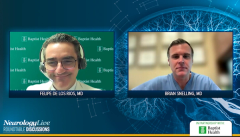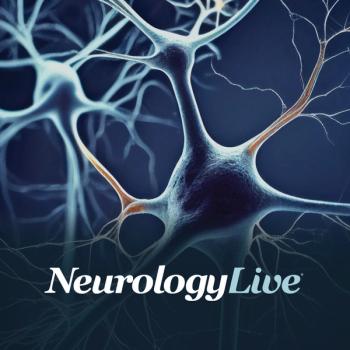
Incorporating AI Into Stroke Triage

In episode 2, a pair of stroke neurologists explore how artificial intelligence is accelerating stroke detection, streamlining workflows, and redefining collaboration in modern stroke care. [WATCH TIME: 4 minutes]
WATCH TIME: 4 minutes
Across the evolving landscape of stroke treatment, advancements in imaging, intervention, and digital technology continue to redefine what is possible for patients. In this special panel discussion series, neurosurgeon Brian Snelling, MD, and neurologist Felipe De Los Rios, MD, share their expertise from
Over five focused conversations, they discuss the major shifts shaping acute stroke management—from expanding thrombectomy eligibility and integrating artificial intelligence into clinical workflows, to the promise of neuroprotective agents, modern strategies for recovery and prevention, and the optimization of stroke systems of care. Together, their insights provide an inside look at how data-driven innovation is transforming outcomes for patients across every stage of stroke treatment.
In this discussion, De Los Rios outlines how AI-based tools—such as RapidAI, Viz.ai, and CINA Stroke—are already changing acute care by identifying large-vessel occlusions, hemorrhages, and ASPECTS scores in real time. De Los Rios, neurologist, Irma Bass Endowed Chair in Stroke Neurology, and director of the stroke program at Baptist Health, described how these systems can automate alerts, accelerate team activation, and one day even guide pre-hospital triage.
Snelling, director of cerebrovascular and endovascular neurosurgery, and director of the stroke program at Marcus Neuroscience Institute, discussed how these platforms have become the backbone of stroke coordination within Baptist Health South Florida, linking hospitals, imaging, and communication across sites. Together, they highlight how integrating AI meaningfully reduces treatment delays, improves collaboration, and ensures timely intervention across an entire regional network.
Transcript edited for clarity.
Felipe De Los Rios, MD: Artificial intelligence has become deeply integrated into our daily workflow. We use it not only for imaging but also for documentation and decision support. In stroke care, AI automatically detects large-vessel occlusions, intracranial hemorrhages, and even helps grade ASPECTS scores—an important step now that we’re treating more patients with large cores. These systems enable earlier activation of the stroke and endovascular teams. An AI alert can fire before a radiologist has finalized the report or before a neurologist finishes evaluating the patient, allowing everyone to prepare sooner. That time savings directly translates to better outcomes—because in stroke, time is brain.
Beyond current applications, AI has huge potential in the pre-hospital setting. Imagine ambient listening tools built into ambulances or dispatch systems that identify stroke-related speech patterns, then guide paramedics through an LVO screen. These technologies could assess stroke probability in real time and pre-alert hospitals before arrival. We’re not there yet, but that’s the direction things are moving, and it’s exciting to see how rapidly these capabilities are evolving.
Brian Snelling, MD: We’ve had significant experience with Viz.ai, which is deployed system-wide at Baptist Health. At Boca Raton Regional Hospital, for example, we use it to coordinate care across our two primary stroke centers and a free-standing ED. The technology acts as a communication backbone—it detects LVOs or perfusion mismatches and automatically notifies the right clinicians. That instant notification lets our neurointerventional and stroke teams contact emergency physicians at referring hospitals—even before radiology has completed the read—to gather details and expedite transfers.
The benefits go beyond speed. These platforms enforce a standardized, streamlined workflow and ensure the right people are always looped in. They also include modules for aneurysm and ICH detection, which quantify hemorrhage volume and again reduce delays. One recent case stands out: an ICU nurse presented with a subarachnoid hemorrhage, and our AI software flagged it immediately. The alert reached our stroke nurse before the ER physician or radiologist had seen the images, allowing rapid mobilization of the team. That kind of automation doesn’t just save minutes—it saves lives.
Felipe De Los Rios, MD: Exactly, and as these systems continue to evolve, they’ll likely extend beyond detection toward predictive analytics and outcome modeling. The combination of AI-assisted imaging, communication, and clinical decision support is reshaping how we manage acute stroke at every step—from the first scan to the angio suite.
Newsletter
Keep your finger on the pulse of neurology—subscribe to NeurologyLive for expert interviews, new data, and breakthrough treatment updates.



































